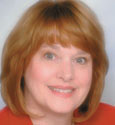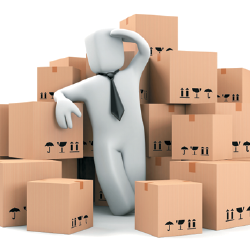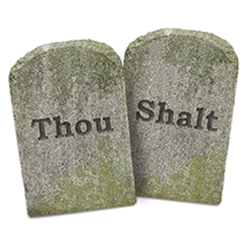 |
 Candy Adams,
Candy Adams,
CTSM, CME,
CEM, CMP, CMM,
is an independent exhibit-management
consultant, trainer, speaker, writer, and an Exhibitor conference
faculty member.
CandyAdams
@BoothMom.com
|
| |
 love to curl up with a good exhibitor services manual - one that's well organized, consistent, and error-free, and which lists all the rules and guidelines I need to follow at that show so my exhibit won't be shut down, removed from the show floor, or have its top lopped off. love to curl up with a good exhibitor services manual - one that's well organized, consistent, and error-free, and which lists all the rules and guidelines I need to follow at that show so my exhibit won't be shut down, removed from the show floor, or have its top lopped off.
The plot doesn't change much from book to book, regardless of the show or industry; 90 percent of the content in one exhibitor services manual is going to make an appearance in every other manual. But it's the other 10 percent that can really get you into trouble - especially the fine print.
An exhibitor services manual usually comprises four sections, one each from the general services contractor, the facility, the official subcontractors, and the show manager/organizer. These rules are very similar from show to show, because they're usually based on industry standards compiled by the International Association of Exhibitions and Events (IAEE).
The IAEE's "Guidelines for Display Rules and Regulations" are just that - guidelines to help show managers standardize rules and regulations for exhibitions in North America. A complete version of the document can be found here.
While there is no fail-safe substitute for reading and adhering to the show's exhibitor services manual, here are a handful of the most common exhibit-related regulations, along with what you need to know to avoid inadvertently breaking the rules.
 Exhibit Height and Hanging Signs: Linear or in-line exhibits may be up to 8 feet tall, unless they are on the perimeter of the exhibit hall, in which case they can be 12 feet tall. No inline exhibits may have hanging signs of any kind. Exhibits that are 20-by-20 feet or larger, whether they are island exhibits (aisles on all sides) or peninsulas (aisles on three sides) can be higher, with limits from 16 to 20 feet, depending on the show. These larger exhibits may also have hanging signs. For regulations on less common booth layouts like end-cap booths, extended header booths, or corner booths, consult the complete guidelines at the aforementioned URL. Exhibit Height and Hanging Signs: Linear or in-line exhibits may be up to 8 feet tall, unless they are on the perimeter of the exhibit hall, in which case they can be 12 feet tall. No inline exhibits may have hanging signs of any kind. Exhibits that are 20-by-20 feet or larger, whether they are island exhibits (aisles on all sides) or peninsulas (aisles on three sides) can be higher, with limits from 16 to 20 feet, depending on the show. These larger exhibits may also have hanging signs. For regulations on less common booth layouts like end-cap booths, extended header booths, or corner booths, consult the complete guidelines at the aforementioned URL.
Hanging signs may hang only above your contracted booth space, at least 10 feet away from adjacent booths. Drawings approved by a structural engineer are usually required, and signs must be sent to the advance warehouse prior to the show to be hung before exhibitor freight arrives on the floor.
 Line of Sight: Exhibitors may not place anything taller than 4 feet in the front half of their exhibits, so they don't block the view from the aisle into adjacent booths. If you can get your neighbors to agree to overlook this rule, show management will usually grant you a variance. This rule is often not enforced at gift, apparel, and craft shows. Line of Sight: Exhibitors may not place anything taller than 4 feet in the front half of their exhibits, so they don't block the view from the aisle into adjacent booths. If you can get your neighbors to agree to overlook this rule, show management will usually grant you a variance. This rule is often not enforced at gift, apparel, and craft shows.
 Fire Regulations: Your booth must be fire retardant according to the rules stated in your exhibitor services manual (rules vary depending on the specific venue and local fire regulations). To test your compliance, fire marshals can hold a flame to your exhibit properties for three seconds to see whether they are combustible. Fire Regulations: Your booth must be fire retardant according to the rules stated in your exhibitor services manual (rules vary depending on the specific venue and local fire regulations). To test your compliance, fire marshals can hold a flame to your exhibit properties for three seconds to see whether they are combustible.
Any type of fire apparatus, such as hoses or extinguishers, may not be blocked or hidden from view. Any fire apparatus will be noted on floor plans as FHC (fire hose cabinet) or FA (fire apparatus). If you're building rooms in your exhibit with ceilings, depending on the size of the area covered, the fire marshal might also require smoke alarms, additional fire extinguishers, or full sprinkler systems.
 Electrical Regulations: Before bringing your own extension cords and power strips to a show, check with the facility's electricians to see if they allow their use or if you must rent theirs. Generally, the criteria for electrical cords is that they must be Underwriters Laboratory (UL) approved, 14-gauge flat (not round) wire, and grounded with a third prong. Most UL-rated power strips with surge protection are allowed, but it's always safer to ask. Electrical Regulations: Before bringing your own extension cords and power strips to a show, check with the facility's electricians to see if they allow their use or if you must rent theirs. Generally, the criteria for electrical cords is that they must be Underwriters Laboratory (UL) approved, 14-gauge flat (not round) wire, and grounded with a third prong. Most UL-rated power strips with surge protection are allowed, but it's always safer to ask.
 Vehicles: Vehicles on display should have less than one-eighth to one-fourth of a tank of gas. Additionally, the gas-tank filler cap must be sealed with tape to prevent vapors from escaping, both battery cables need to be disconnected, and the vehicle must be driven on the floor by one of the GSC's material handling crew, who will keep the keys for the duration of the show. The fire marshal may also require that an extra fire extinguisher be placed near the car. Vehicles: Vehicles on display should have less than one-eighth to one-fourth of a tank of gas. Additionally, the gas-tank filler cap must be sealed with tape to prevent vapors from escaping, both battery cables need to be disconnected, and the vehicle must be driven on the floor by one of the GSC's material handling crew, who will keep the keys for the duration of the show. The fire marshal may also require that an extra fire extinguisher be placed near the car.
 Confines of Booth: Any and all activities you plan on conducting, such as distributing literature or demonstrating your product, must take place within the perimeter of the space you've rented, which your booth space contract and exhibitor services manual refer to as "confines of booth." This prevents exhibitors from distributing literature at the entrance to the convention center, in the convention center lobby or restaurants, or in the exhibit-hall aisles. Confines of Booth: Any and all activities you plan on conducting, such as distributing literature or demonstrating your product, must take place within the perimeter of the space you've rented, which your booth space contract and exhibitor services manual refer to as "confines of booth." This prevents exhibitors from distributing literature at the entrance to the convention center, in the convention center lobby or restaurants, or in the exhibit-hall aisles.
 Sound Levels: Sound coming from your booth space should only be audible as far as the center of the aisles surrounding your exhibit - 85 decibels or less. If you exceed this limit, show management will likely ask you to turn down the volume. If after being asked to resolve the problem, you continue to violate this rule, show management may choose to cut power to your exhibit. Sound Levels: Sound coming from your booth space should only be audible as far as the center of the aisles surrounding your exhibit - 85 decibels or less. If you exceed this limit, show management will likely ask you to turn down the volume. If after being asked to resolve the problem, you continue to violate this rule, show management may choose to cut power to your exhibit.
 Copyrighted Music: Any music played in your booth, whether live or recorded, may be subject to copyright laws. There are three authorizing licensing organizations that collect copyright fees on behalf of the composers and publishers of the music: Broadcast Music Inc. (BMI); the American Society of Composers, Authors, and Publishers (ASCAP); and the Society of European Stage Authors and Composers (SESAC). Copyrighted Music: Any music played in your booth, whether live or recorded, may be subject to copyright laws. There are three authorizing licensing organizations that collect copyright fees on behalf of the composers and publishers of the music: Broadcast Music Inc. (BMI); the American Society of Composers, Authors, and Publishers (ASCAP); and the Society of European Stage Authors and Composers (SESAC).
After you have chosen a song, contact one of these organizations to find out which one owns the rights to that specific song. You will then have to pay that organization to use the song, based on the frequency you will play it and other factors.
 Exhibit Lighting: Exhibit lighting should be directed within the boundaries of your booth space, not on the surrounding aisles, walls, or exhibits. Show management may require drawings of proposed lighting plans. Many shows prohibit flashing lights, spinning or pulsating lights, and lighting that could be potentially harmful, like lasers and ultraviolet lighting. Exhibit Lighting: Exhibit lighting should be directed within the boundaries of your booth space, not on the surrounding aisles, walls, or exhibits. Show management may require drawings of proposed lighting plans. Many shows prohibit flashing lights, spinning or pulsating lights, and lighting that could be potentially harmful, like lasers and ultraviolet lighting.
Quartz halogen lighting fixtures can be a fire hazard and are banned in some convention centers. The show facility may even have a different set of lighting rules than the show manager, so be aware of all restrictions before you arrive on show site.
 Structural Integrity: Exhibits should be designed to withstand some contact, including wind coming through open freight doors and minor bumps from attendees and fork trucks. Exhibits with second stories and upper decks usually have to submit floor plans for approval by both a structural engineer licensed in the state where the exhibit will be erected and the facility's structural engineer to confirm their safety and assure conformance to the local building code. Structural Integrity: Exhibits should be designed to withstand some contact, including wind coming through open freight doors and minor bumps from attendees and fork trucks. Exhibits with second stories and upper decks usually have to submit floor plans for approval by both a structural engineer licensed in the state where the exhibit will be erected and the facility's structural engineer to confirm their safety and assure conformance to the local building code.
Such exhibits may also need to be rigged to the ceiling - at the exhibitor's expense - for structural stability. Some shows require drawings for any exhibits larger than 20-by-20 feet, so make sure you know if and when you need to submit your plans in order to avoid on-site hassles.
 Food and Water: If you are a food or beverage distributor, you will generally be allowed to provide small amounts (1 ounce of solid foods, 2 ounces of fluids) of your product. If you are not in the food business, check with the exclusive caterer for the convention center before distributing food items in your booth. The caterer will generally charge you a fee based on the amount of revenue it would have gained from selling the food or beverage you are distributing. Food and Water: If you are a food or beverage distributor, you will generally be allowed to provide small amounts (1 ounce of solid foods, 2 ounces of fluids) of your product. If you are not in the food business, check with the exclusive caterer for the convention center before distributing food items in your booth. The caterer will generally charge you a fee based on the amount of revenue it would have gained from selling the food or beverage you are distributing.
 Suitcasing and Outboarding: This rule prevents companies from soliciting trade show attendees without purchasing exhibit space. "Suitcasing" is selling within the exhibit hall without purchasing a booth space. "Outboarding" refers to non-exhibiting companies who attempt to piggyback off of the event by booking space near the convention center to hold meetings and events with show attendees. Suitcasing and Outboarding: This rule prevents companies from soliciting trade show attendees without purchasing exhibit space. "Suitcasing" is selling within the exhibit hall without purchasing a booth space. "Outboarding" refers to non-exhibiting companies who attempt to piggyback off of the event by booking space near the convention center to hold meetings and events with show attendees.
 Banned Items: Show management may ban some items that are just downright messy or a nuisance to clean up, such as glitter, confetti, adhesive stickers, and popcorn. Don't plan on using helium balloons, either, as they have a tendency to get loose and head straight for the ceiling. Banned Items: Show management may ban some items that are just downright messy or a nuisance to clean up, such as glitter, confetti, adhesive stickers, and popcorn. Don't plan on using helium balloons, either, as they have a tendency to get loose and head straight for the ceiling.
Mylar balloons are also generally banned, as they can actually short out overhead lighting and cause fires. If you violate this regulation and distribute balloons that end up floating to the convention center's ceiling, you may be billed for the equipment and labor to remove them after the show.
 Variances: Breaking the rules is a bad idea, but just because a rule or regulation appears in your exhibit space contract or exhibitor services manual doesn't mean it can't be challenged. Don't be afraid to ask show management for a variance on any of its published rules - but be sure to do so prior to the show, and allow enough time to alter your plans if show management refuses your request. After all, when your company's trade show investment is on the line, it's far easier to ask for permission than it is to beg for forgiveness.e Variances: Breaking the rules is a bad idea, but just because a rule or regulation appears in your exhibit space contract or exhibitor services manual doesn't mean it can't be challenged. Don't be afraid to ask show management for a variance on any of its published rules - but be sure to do so prior to the show, and allow enough time to alter your plans if show management refuses your request. After all, when your company's trade show investment is on the line, it's far easier to ask for permission than it is to beg for forgiveness.e
|





 love to curl up with a good exhibitor services manual - one that's well organized, consistent, and error-free, and which lists all the rules and guidelines I need to follow at that show so my exhibit won't be shut down, removed from the show floor, or have its top lopped off.
love to curl up with a good exhibitor services manual - one that's well organized, consistent, and error-free, and which lists all the rules and guidelines I need to follow at that show so my exhibit won't be shut down, removed from the show floor, or have its top lopped off. 


